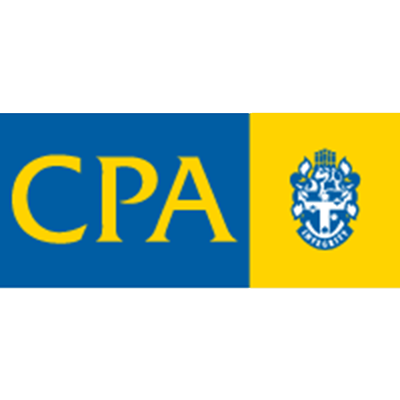Life before Gilligan Sheppard comprised of two facets for Marion Jean Garlick. The first being that from the age of 16, Marion worked for the Inland Revenue Department. Reminiscing about her time there, she concludes that technology has changed so much, not many would have even heard of the type of work she did.
“I began in the ledgers section where tax assessments used to be recorded on a piece of cardboard. All cards were kept in boxes, an A-Z of the Whangarei/Northland population – about a basketball court sized area. The job was to code up the tax, prepare the tax statement using an OCR ledger machine, which by the magic of carbonated paper, produced the permanent record on the ledger card and copies for the taxpayer. When the tax was paid, I’d have to add the information onto the card. Then I’d have to go through all the cards to find the ones where payment hadn’t been made, add on the interest and chase up the payment.”
Marion went from ledgers to the EVA section then onto technical (fixing incorrect tax). Back then employees had to file tax returns and could claim expenses via presenting receipts. Marion would go through all of these and decide whether they were deductible or not and provide the outcome.
The experience of working on public counters and prosecutions for people who hadn’t filed tax, was the most entertaining part of the job for Marion. It took a bit of an effort to get people to court – getting a summons and serving the summons anywhere from Wellsford and north, including Kaikohe and Kaitaia!
One such time, the summons hadn’t been delivered for one reason or another, so it was given to Marion to serve. She had another court hearing in the afternoon, figured she could get it delivered in the morning and be back in time, and also managed to get a colleague to come along for company.
“Imagine a block of land, with what was loosely called a road, winding up to a half constructed, relocated house. It was pouring with rain and there weren’t any gutters around the house. To knock on the door, I had to jump through a waterfall. The guy answered, verified his name and I handed him the summons. I promptly jumped back through the waterfall to try and high tail it back to the car.
“He called out that he had some questions, so I had to turn and jump through again. We chatted for a minute or two and once sorted, jumped through the cascade of water one more time. I made it back to the car only to find that it wouldn’t start. My colleague and I just stared at each other in panic! After a little while, we attempted again, it worked, and I did make it to the court hearing that afternoon – albeit looking like a drowned rat!”
There weren’t instant fines like there are now, you had to go to court, and a judge would determine the fine. I would have to go to court at the beginning of the day to talk with the solicitor, then I’d have to wait for the IRD cases to come up (usually at the end of the day). I would spend my time watching the other cases, which was quite entertaining. I remember this one case…
It was the third case of the day and the previous ones had let everyone know that the judge was not mucking around today. The defendant was accused of assault, and it had taken place at the local livestock sales yards. ‘PC Plod’ stands at the front of the court, gets out his notebook and starts reading the notes.
“The defendant was having a heated exchange with the witness. After I approached the defendant to gather his side of the story, I went to talk to the witness. From the corner of my eye, I saw an object coming towards me.”
The judge interrupted, “Describe what the object was please.”
The officer replied, “It was a pig.”
Everyone in the court was struggling not to laugh. Assault with a pig. Classic.
The second facet of life for Marion pre-Gilligan Sheppard, was her time with the IRD’s investigation’s unit. There were nasty phone calls and times where she thought she was being followed. At the age of 40, she made the decision to leave and become an accountant.
The first recruitment agent Marion spoke with advised it would be difficult to find a position given her age! With frustration, Marion found Kathy Glass who was more aligned with her determination and she was placed at a little firm Kingston Duff and Bish (KDB). Starting at the bottom, Marion learned how to do accounts. Within five years Marion obtained her CA qualification. She remembers sitting the exam at the same time as another guy, who unfortunately didn’t pass, and Marion describes it as the worst and happiest day. It was a mean exam and confesses that she didn’t have the same support as what Gilligan Sheppard offers its team.
Regrettably, as the firm grew there were changes to the original team she joined, and it seemed like the right time for a change. Marion spoke with recruiter Kathy Glass and chose from her selection of firms. She knew of Bruce Sheppard’s fame and based on Kathy’s information that Gilligan Sheppard was ‘a little bit different’, Marion was interviewed by Greg Rathbun and Richard Ashby.
At the time Marion was ‘just an accountant’ but she came in with an attitude she labelled as ‘you guys need me.’ Being the new kid on the block Marion just wanted to settle in, do the work and not get involved in any internal politics or structure.
But at her first training session with the Gilligan Sheppard team, she couldn’t believe what she experienced.
“It was so disorganised and messy. People were talking over each other, then all at the same time and it was hard to know if anyone knew what was discussed or agreed upon. Maybe Bruce and Greg thought they had structure, but I couldn’t see it!”
Marion simply started doing things to make the processes better. Bruce was busy with his New Zealand Shareholders Association project, and Greg was implementing the outsourcing to India strategy. Marion was left to her own devices and her improvements and hard work led the way to becoming an Associate.
Three to four months into working at Gilligan Sheppard, Bruce gave Marion a client to look after. They needed all their files brought up to date. At Marion’s initial meeting with the client, they figured out a two degrees of separation story.
The client’s former “accountant” was a disbarred lawyer who had been sent to prison for altering documents to get a GST refund when they were not entitled to one. Together they figured out it was a case where Marion had been a witness for the IRD! There was a fair bit of work to get the files sorted again, but both Marion and the client thought it was a hilarious situation.
After Greg left, Marion inherited his clients and was made a director. One of the team (Joanne Turner) became terminally ill and at the same time, several people left including the recently appointed BAS manager. So, Marion moved into the role of Business Advisory Services (BAS) Manager. She got the team back up and running, recruited new team members, including Amy Street who was recommended by Joshna Mistry, and streamlined processes. After a time BAS was running well, or in Marion’s words ‘really pumping’ and the reins were handed over to Amy.
Gilligan Sheppard was also one of the early adopters to convert from Chartered Accountant (CA) to Certified Public Accountant (CPA). It was relatively new in New Zealand and Marion took the opportunity to be on the Public Practice Committee. The purpose was to connect the association with its members and provide meaningful and ongoing development. The highlight for Marion was planning, organising, and delivering an annual Public Practice Forum – which had to be online due to Covid.
Another favourite experience was the ‘Rainbow Event.’ Marion attended not really knowing what it was, but it turns out it was aimed at gay members. She describes it as the most wonderful event she’s ever been to, “such warm and open people who appreciate the freedom they have in New Zealand to be who they are.”
Marion also chairs on a few other committees and is a director of TICC. TICC is an outsourcing company for AML services – for real estate agents, accountants, financial service providers and lawyers. It was a small start up on the forefront of new legislation. It’s been three years of interesting work for Marion, and it is now making money and has huge future potential.
Upon reflection, Marion wants to be noted for one thing. The support she has given to her fellow workers and clients alike.
“I have been there in the moments of utter despair and absolute joy. To be able to relieve burdens for people and to celebrate successes is something I am very proud of and have found extremely rewarding.”











